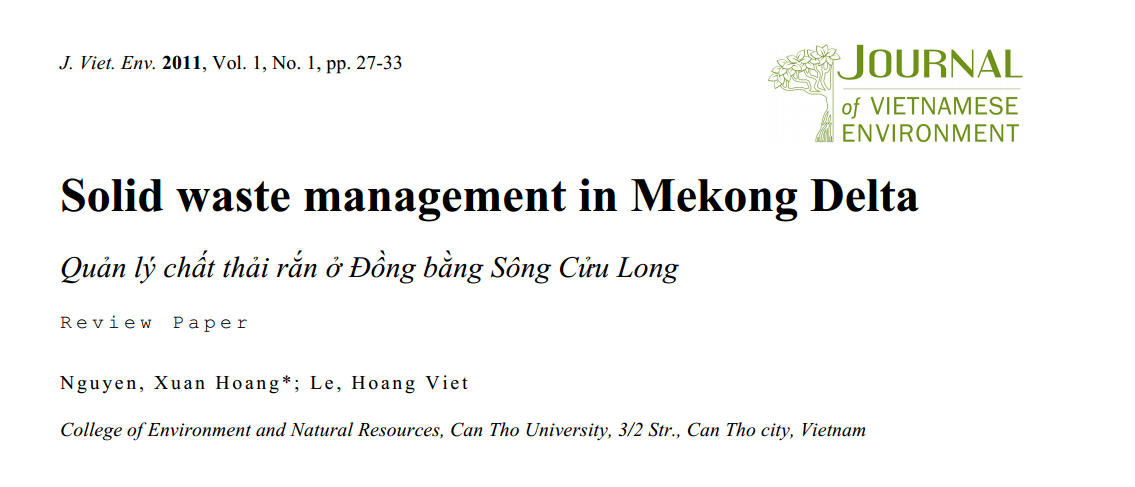REPORTS & PUBLICATION
REPORTS
Industry Waste Management Plan Guidelines
2011 | Provincial Government of Western Cape
The purpose of this guideline is to provide industry with assistance and guidance with respect to the development of their industry in WMPs using the Industry Waste Management Plan Guideline. Furthermore, the assessment checklist, that will be used by the DEA&DP for evaluation of the submitted Industry WMPs, is also attached for self-assessment by industry.
Country Analysis Paper (BHUTAN)
2011 | UNCRD
Bhutan is a small landlocked country in the Eastern Himalayas bordered by China in the North and India on the other 3 sides. Bhutan has a population of 695,822 in the year 20101 with total land area of 38,394 square. The landscape is characterized by rugged terrain and steep mountain valleys ranging from 150meters in the sub- tropical valleys in the southern foothills, through temperate zone to heights exceeding 7000 meters in the alpine regions of the mountains.
Toward Sustainable Municipal Organic Waste Management in South Asia
2011 | ADB
Description"This report provides a clear and up-to-date guide for harnessing the huge resource recovery potential of organic waste in the region, and is a practical reference for any policy maker or practitioner working to improve the livability of cities. Dr. Masaru Tanaka, President, Society of Solid Waste Management Experts in Asia and Pacific IslandsThe massive scale of urbanization in South Asia is expected to create a surge in demand for solid waste services.

Solid waste management in Mekong Delta
2011 | Journal of Vietnamese Environment
Integrated Solid Waste Management (MSW) in Vietnam has been increasing quickly and became one of the most considered environmental problems in Mekong Delta (MD) region covering 13 provinces and municipalities in the south of Vietnam. With a considerably large amount of MSW, the region produces about 5\% of the total amount of MSW of the country. The collection rate of solid waste is about quite high (65 - 72\%) in the cities and rather low (about 40 - 55\%) in the rural areas, with a high content in organic matter (about 60 - 85\%). The climate of MD can be characterized as tropical and monsoonal with a high rate of humidity and a strong impact of flooding. Like other regions too, the MSW collection and treatment system is still underdeveloped and rudimentary, with disposal sites being the sole dumping method of the unsorted MSW remaining untreated by any me-chanical and biological pre-treatment steps. Within this paper, the current treatment, management and operation of MSW systems are introduced, as well as the identification of advantages and dis-advantages, environmental impacts, potential risks of the MSW system within the impact of global climate change.
Studying Municipal Solid Waste generation and Composition in the Urban areas of Bhutan
2010 | 1 The Department of Urban Development & Engineering Services, Ministry of Works & Human Settlements, Thimphu, Bhutan
Bhutan is a small landlocked country located in the eastern Himalaya between Tibet-China (in the North) and India (in the east, south and west). Its total population in 2005 was 672,425 (PHCB, 2006) and it has a total area of 38,394 km2 (MoA 2004). Like any other developing country, Bhutan too is facing the challenges of rapid urbanisation with more than 30\% of the country population living in the urban areas which is expected to increase in the next few decades. Although the national annual population growth rate in Bhutan is 1.28\% (MoWHS 2007, PHCB, 2006), its average urban population growth rate has been reported to be 7.3\% annually with the western region, including Thimphu, experiencing maximum growth rate of about 11\% (MoWHS 2007). Thimphu is the capital city of Bhutan with a total population of 79,185 (PHCB, 2006) in 2005 which is more than 40\% of the entire urban population in Bhutan.
PPP-ISWM Initiative in Bhutan
2010 | UNDP
Urbanization in Bhutan has taken place at a rapid pace over the last 10 years or so. By 2005, the proportion of Bhutanese urban population had grown to 31 percent. It is projected that by 2020 half of the Bhutanese population will be living in urban areas. Burgeoning urban population has created several environmental problems such as air and water pollution, water shortage, increase of municipal waste volumes and types, congestion of traffic and buildings, and land degradation. The Thimphu Municipality has not yet developed any standard and effective strategy for waste management at the household and community levels.
 The kNOwWaste Knowledge Platform was developed through a Project Cooperation Agreement funding by UNEP on 2016. The platform provides data and information on holistic waste management to stakeholders in Asia and the Pacific region. The platform was developed with the following aims: generate and consolidate data or information on holistic waste management, transform data into easily comprehensible outputs for use by key stakeholders, map out and disseminate information on international waste management projects under the GPWM and UNEP projects as well as other international partners, and provide capacity building support through dissemination of data or information support for relevant stakeholders on holistic waste and waste management system.
The kNOwWaste Knowledge Platform was developed through a Project Cooperation Agreement funding by UNEP on 2016. The platform provides data and information on holistic waste management to stakeholders in Asia and the Pacific region. The platform was developed with the following aims: generate and consolidate data or information on holistic waste management, transform data into easily comprehensible outputs for use by key stakeholders, map out and disseminate information on international waste management projects under the GPWM and UNEP projects as well as other international partners, and provide capacity building support through dissemination of data or information support for relevant stakeholders on holistic waste and waste management system.
 2025 © Regional Resource Center for Asia and the Pacific (RRC.AP). All Rights Reserved.
2025 © Regional Resource Center for Asia and the Pacific (RRC.AP). All Rights Reserved.
